Once an exclusive winter resort, San Remo is a distinctive Riviera pearl to be enjoyed all year round, thanks to its iconic music festival, penchant for flowers and charming old town.
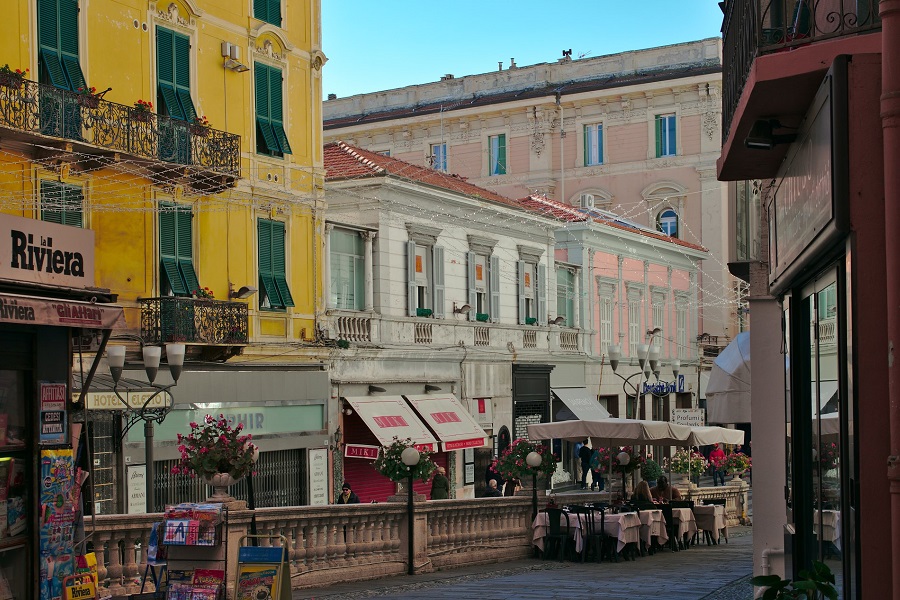
A view of Via Matteotti (Photo: Roberto Franceschini via Flickr / CC BY-SA 2.0)
The arched coastline of Liguria has nearly completed its westwards run when it meets San Remo. Hints of France seep in from the nearby border, and the famous Art Nouveau casino overlooks beach-goers who crowd the sands in high season. Here and there, multicoloured compositions shining in the sun keep the city true to its nickname ‘the City of Flowers’.
Much like the rest of the Riviera, San Remo first rose as a tourist destination in the mid-1800s. The long sojourns of tsarina Maria Alexandrovna and future-kaiser Frederick III boosted its popularity among wealthy Northern Europeans. They flocked here attracted by Mediterranean living and year-round sunshine, bringing about a rich collection of noble villas and palaces. Such architectural grandeur contrasts sharply with the old town. Once snubbed by elite tourism, its charming maze of alleyways climbs up the hill in a bewildering network of arches, courtyards, stairways and covered passages.
Things to see and do
Seaside allure meets rich architecture in modern San Remo, where the urban landscape is punctuated with late-1800s and early-1900s buildings lining the Mediterranean. Villa Noseda is a neogothic gem now home to a restaurant (Glam Restaurant), while Villa Angerer flaunts precious Art Nouveau decorations and floral motifs. More noteworthy palaces can be found in the eastern part of town (see below), as well as lining Corso degli Inglesi.
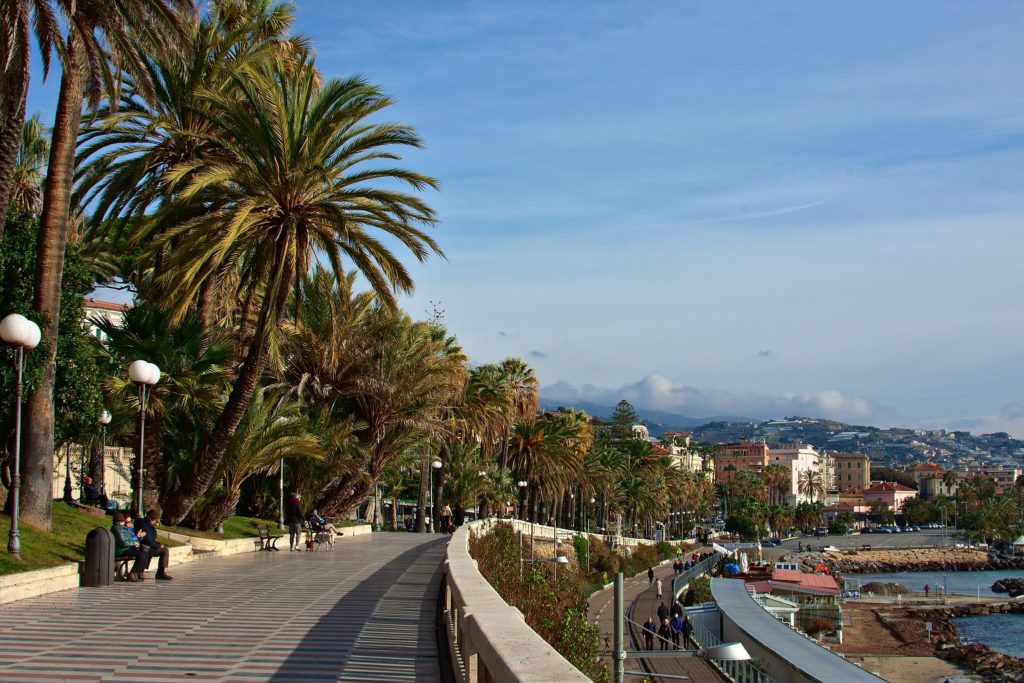
The Empress’ Promenade (Photo: Roberto Franceschini via Flickr / CC BY-SA 2.0)
Corso Trento e Trieste runs along the new and old ports, which face each other. Next to them, the triangular fortress of Santa Tecla is a testimony to the historic aversion San Remo people harboured towards the ruling Republic of Genoa. The revolt of 1753 was the hardest to quell, and prompted the Genoese to build the fortress as a deterrent from future uprisings (which explains why it faces inland rather than seaward). Used as a prison until the 1990s, the building is now a cultural space and exhibition centre.
Corso Imperatrice (Empress’ Promenade) recalls the VIP sojourn of tsarina Maria Aleksandrovna in the winter of 1874, at the end of which she donated the palm trees providing shade to this pretty walk. The views from here offer lively beach scenes or tranquil seascapes depending on the season, while an open-armed statue depicting Spring symbolises the famously-benign weather in this part of Liguria.
Vivid, golden onion domes make for a curious sight as one walks down the promenade. They top the orthodox church of Christ the Saviour, originally built for the community of Russian aristocrats who followed in the tsarina’s footsteps. The eclectic yet elegant design merges Byzantine and Moorish features – an example of the cosmopolitan vein of early-1900s San Remo. Only meters up the road is another local institution, although not of the religious type. Launched in 1905, the Liberty-style casino brought the town up to speed with its nearby counterpart Monte Carlo in Monaco, providing the secular ‘cathedral’ the Riviera lifestyle required.
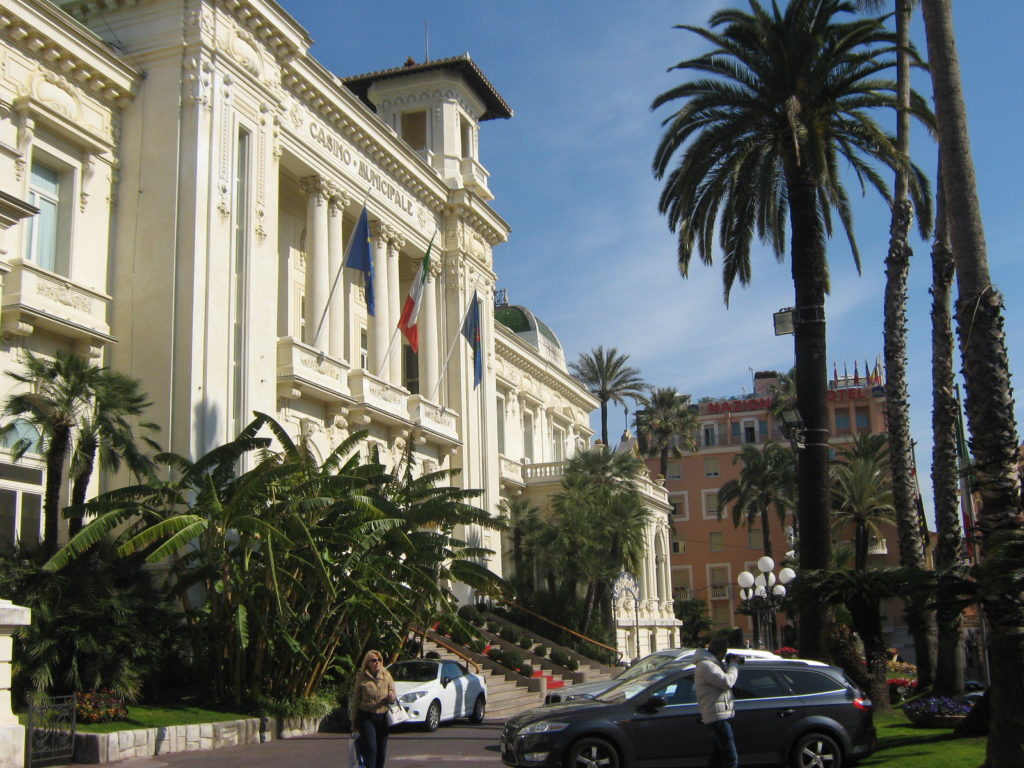
The famous casino (Photo: alepuzio via Flickr / CC BY-SA 2.0)
The casino also marks the starting point of San Remo’s shopping lane, Via Matteotti. Squeezed among high-street brands and chains, the Ariston Theatre might go unnoticed by the occasional passerby. It is, however, the home of the long-running Italian Song Festival (commonly known as Festival di Sanremo), an iconic annual event in Italy and the original inspiration for the Eurovision Music Contest. Another sight to take in while strolling Via Matteotti is Palazzo Borea d’Olmo, a Baroque masterpiece like few others in Western Liguria.
The Santo Stefano Gates are a sequence of Medieval accesses to the old town, each marking a subsequent extension of the city walls. This part of San Remo is called ‘Pigna‘ (Pine Cone), after its layout of concentric lanes crisscrossed by narrow alleyways. Taking sudden turns and exploring aimlessly might be the best way to enjoy this area, but some of the landmarks to seek out include the vaults of San Sebastiano, Piazza dei Dolori and the church of San Giuseppe (where you can spot a water trough repurposed as an altar). Near the top, the San Giuseppe Gate is exceptionally preserved, and leads to the main belvedere looking out on San Remo.
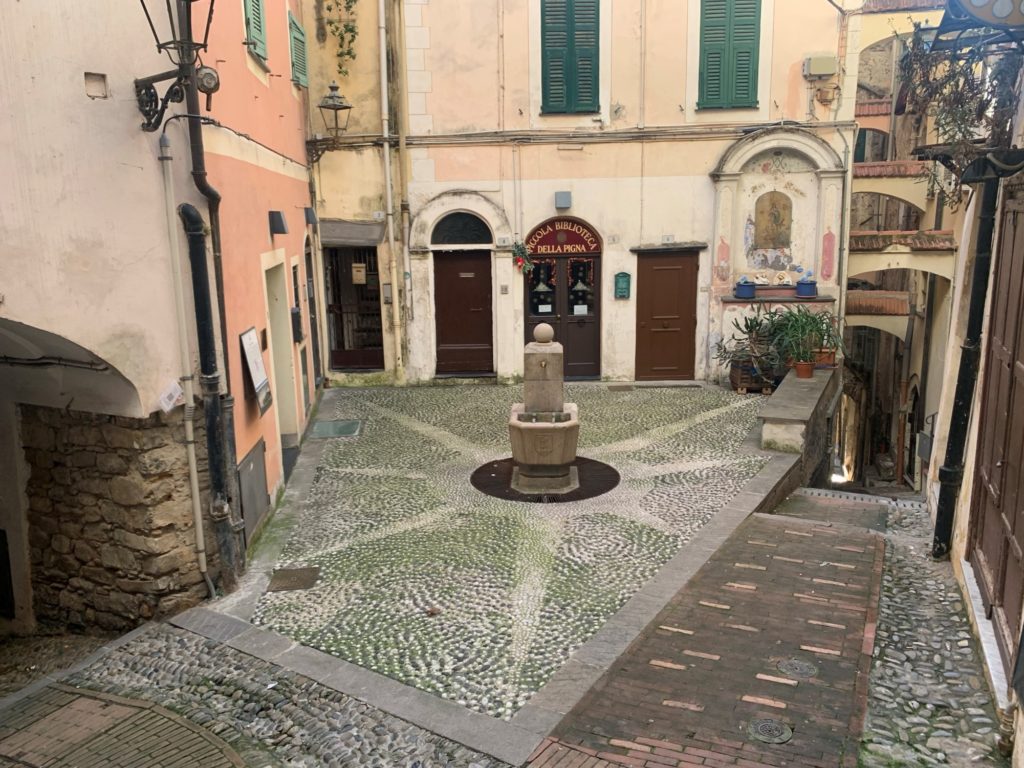
A typical sight in San Remo’s Pigna (Photo: Andrea Gambaro for TravelMag.com)
More historic landmarks are located downhill, just outside the old town. The Ciapela Tower was built in 1550 as a defence from Barbaresque corsairs, while the 1100s concathedral of San Siro is the oldest church in town. A small grid of alleyways stretches seawards from here, home to a variety of bars, restaurants and independent shops.
Among the grand architecture located in eastern San Remo, Villa Nobel hosts a museum dedicated to Alfred Nobel, who lived and worked here during the last years of his life. Lush gardens surround this and the nearby palaces, which include Villa King and Villa Orban. Visit the Flower Museum to discover the local history of floriculture, another by-product of 19th-century tourism.
Cycling culture also features among the town’s defining traits. It’s celebrated every year in March as the Milano-Sanremo takes place, a classic road-cycling race first held in 1907. All year long, bike rentals are available for visitors to enjoy the old coastal railway recently converted to a 24-km cycling track.
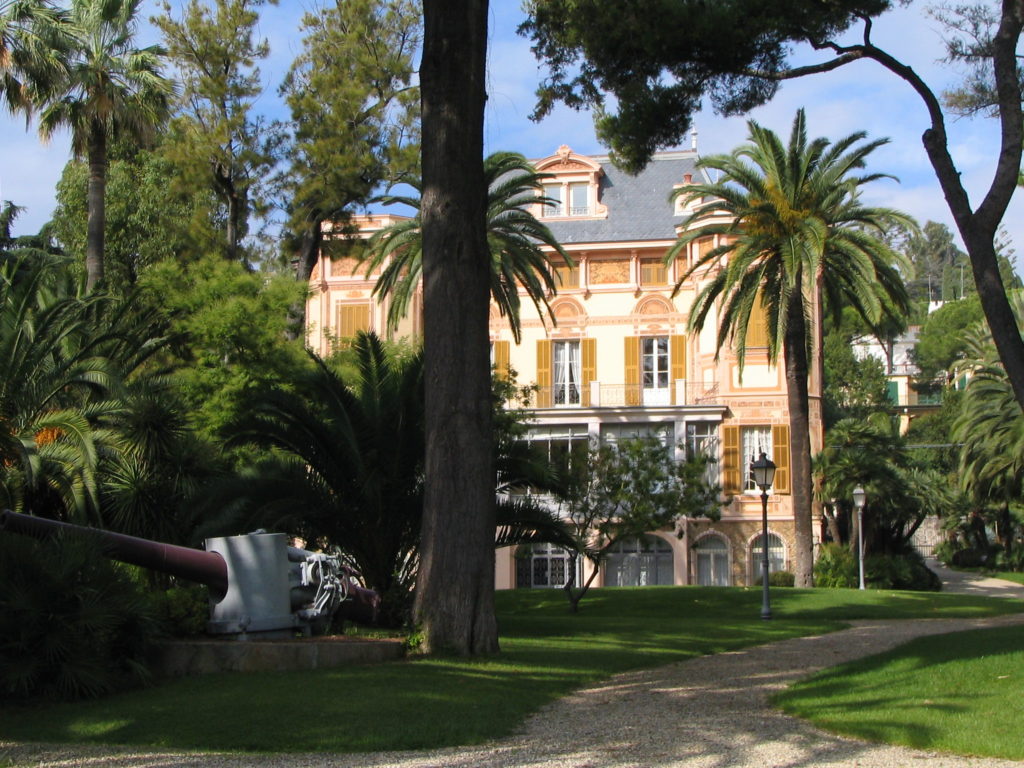
Villa Nobel (Photo: vicuna r via Flickr / CC BY-SA 2.0)
Where to stay
The only five-star hotel in San Remo is Royal Hotel (Corso Imperatrice, 80), a 19th-century palace looking out on the promenade, and adjoined by a subtropical garden and a Giò Ponti swimming pool. Art and style blend seamlessly throughout the halls and communal areas, while the rooms aim for an ideal balance between elegance and comfort. Amenities include gourmet restaurants, a poolside bar, panoramic terraces, a wellness centre and sport facilities. Founded in 1872, Royal Hotel recently celebrated its 150th anniversary.
Alfred Nobel commissioned the construction of Hotel Belsoggiorno (Corso Matuzia, 41) in 1870. Originally meant as a coaching inn, the hotel never changed its name after the Swedish inventor died, as per his testament. The rooms feature a classic style and include double and triple options, some of which have a balcony and a view of the sea. Junior suites are also available. The on-site restaurant focuses on Ligurian and Mediterranean cuisine, housed in an elegant 1930s hall. Only meters from the sea, the hotel is located in the western part of San Remo.
A Liberty-style palace, Hotel Alexander (Corso G. Garibaldi, 123) offers classic rooms and modern apartments in the heart of San Remo. The hotel looks out on a private garden, and a new wellness centre is available. Some of the town’s main attractions are located a short walk away, such as the shopping lane, Pigna and the marina. Each apartment comes with luxury features and private access.
Eat & Drink
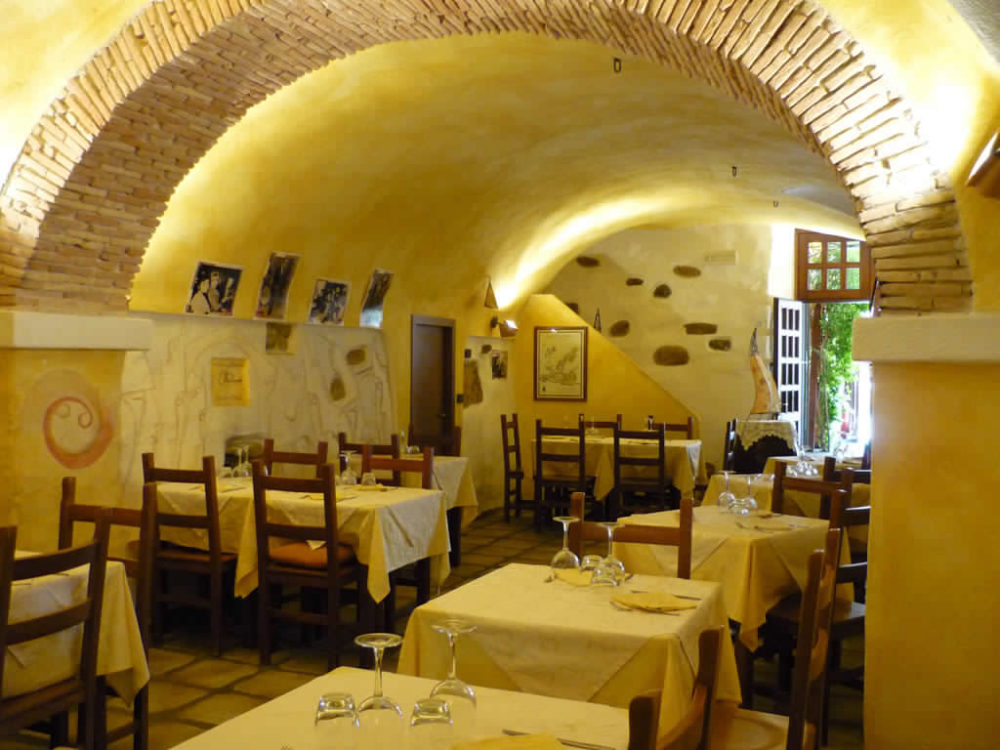
The interiors of Osteria Camelot (Photo: courtesy of Osteria Camelot)
Osteria Camelot (Via Morardo) is housed at the historic Sapia Rossi Palace, which hosted Napoleon in 1794. Today, this family-run trattoria is the place to go for genuine regional cuisine in the Pigna area. Sample menus might include Ligurian classics such as brandacujun whipped codfish or bagnun anchovies soup, as well as the evergreen (excuse the pun) trofie al pesto. Everything is cooked to order by mamma Tita, and daily specials are always available. Exposed brickwork and warm colours create a pleasant and informal atmosphere, while a small terrace makes for a romantic outdoor setting. Fair prices and generous portions complete the experience.
Looking out on the tourist port, Ittiturismo M/B Patrizia (Corso Trento Trieste, 21) serves mostly fish and seafood freshly caught by its own 17-meter trawler. Three generations of fishermen come together with a refined and original take on seaside dishes, be they reinvented classics or brand-new creations. The menu shapes up according to the catch of the day, which is combined with prime ingredients sourced from small local producers. Keep an eye out for the local red prawn, a top-rated delicacy of the Western Riviera. The restaurant also sells its catch directly on the pier.
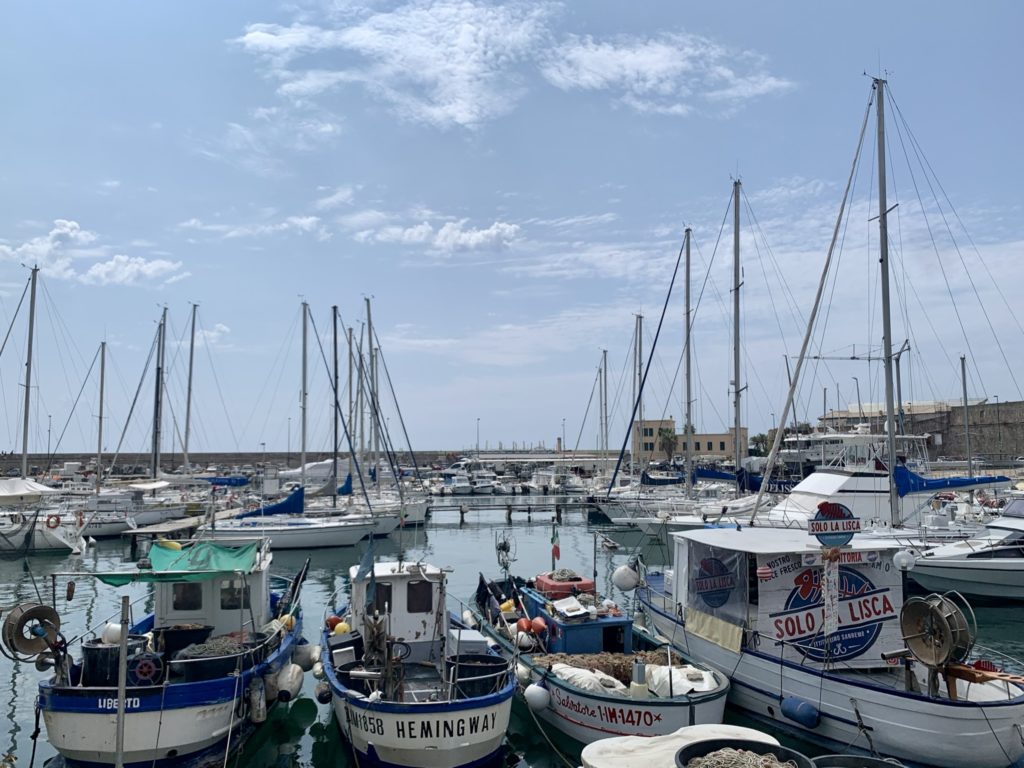
At the harbour (Photo: Andrea Gambaro for TravelMag.com)
La Pignese (Piazza Sardi, 5) is an institution when it comes to fish restaurants in San Remo. Run by the same family since 1919, it keeps dishing out a solid selection of Ligurian and maritime classics, aiming to balance simplicity and refinement. The ambience is elegant yet unpretentious, matched by an interesting wine list. Located in the old fishermen’s square, La Pignese is popular with locals and tourists alike, as well as VIPs visiting San Remo during the days of the festival.
Among the many options tucked away in San Remo’s alleyways, Ipazia Cibi e Libri (Via Francesco Corradi, 64) offers an original and easygoing space to enjoy honest food. Its small room accommodates only a handful of tables, surrounded by packed bookshelves. A blackboard outside lists the daily menu. Expect a small selection of meticulously-curated options, revolving around seasonal products and local cuisine. The wine list is just as intriguing. Booking ahead is recommended.
Street food enthusiasts visiting San Remo shouldn’t miss out on sardenaira. A direct descendent of the Niçoise pissaladière, this cross-border focaccia can be found in many variations along the Riviera, and has in San Remo one of its most prominent versions. The base, a heavenly balance of soft and crunchy, is topped with tomatoes, anchovies, capers, oregano, taggiasca olives, unpeeled garlic and local extra virgin olive oil. The most celebrated places to try it include Bar La Teglia (Corso G. Garibaldi, 160), La Tavernetta (Via Palazzo, 129) and La Fornarina (Via Palazzo, 74), although this baked delicacy is ubiquitous in San Remo. Comparative tastings might be due.
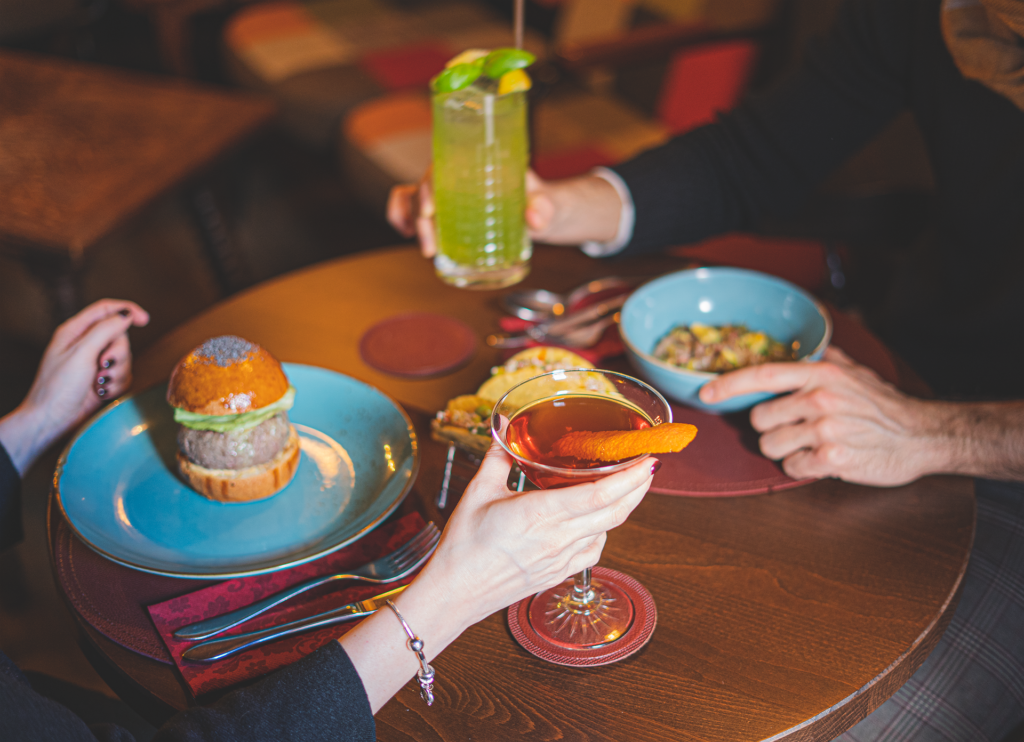
Food and cocktail pairings by Mille806 (Photo: Vittorio Foti, courtesy of Mille806)
Mille806 (Via Giacomo Matteotti, 104) is the locals’ go-to for swanky cocktail dinners. In a trendy, speakeasy-inspired ambience, international flavours come together effortlessly, while the signature cocktails comprise both seasonal options and house classics. Sample pairings might include salmon tacos with a sake- and gin-based concoction, or olive gin and peas-flavoured sherry served with a ‘Farmer’s Egg’ (peas and coconut mush, Piedmont nuts, raspberry powder). If looking for wine rather than cocktails, Wine Not? (Via Francesco Corradi, 56) offers a curated selection of local and international wines served along alluring platters, salads and sandwiches.